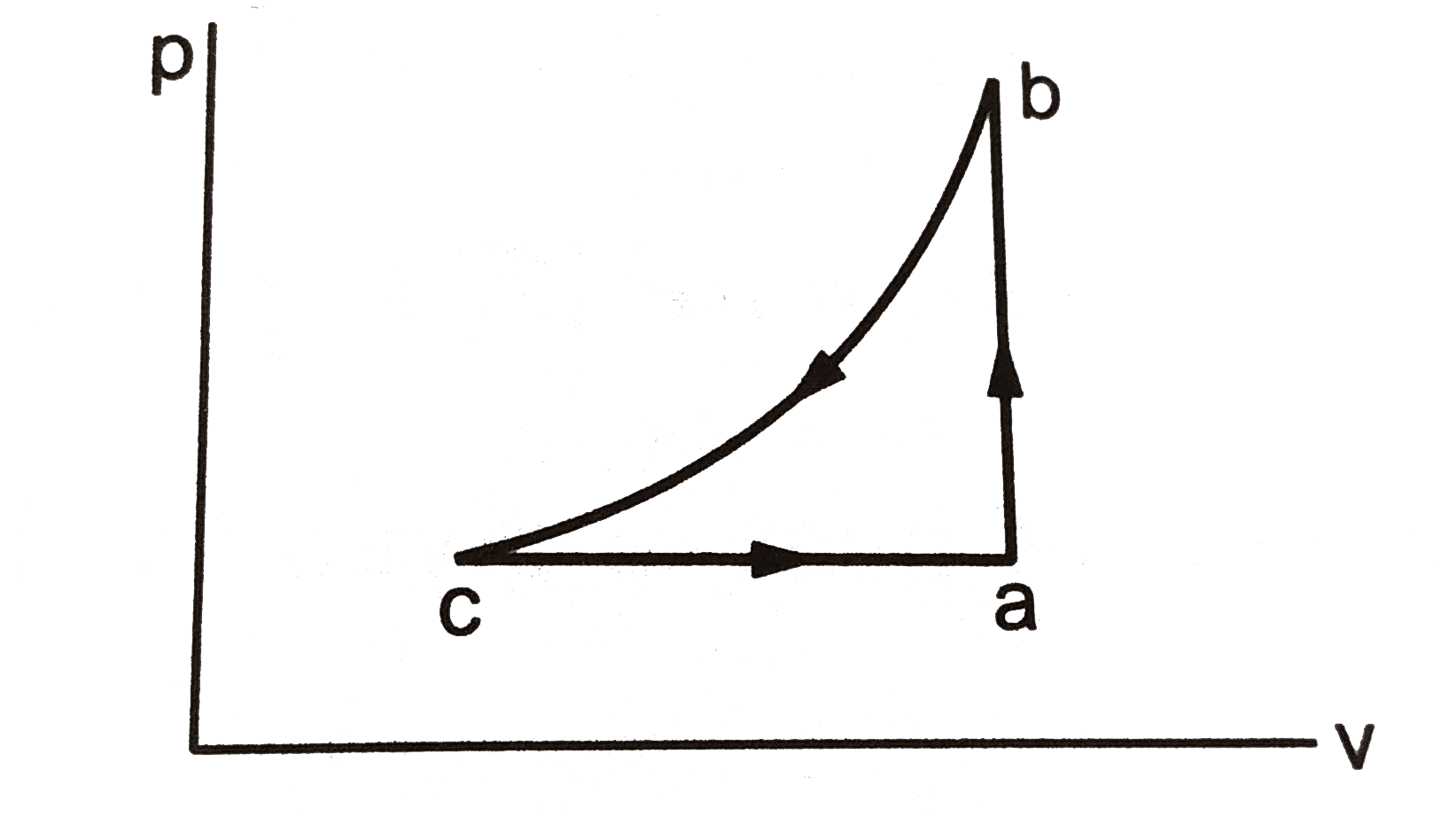Calculate the efficiency of an engine whose working substance absorbs 3000 J of heat from the source and rejects 2000 J of heat to the sink.
To calculate the efficiency of the engine, we can follow these steps:
1. Identify the Given Values:
- Heat absorbed from the source (Q1) = 3000 J
- Heat rejected to the sink (Q2) = 2000 J
2. Calculate the Work Done (W):
- According to the first law of thermodynamics, the work done by the engine can be calculated using the formula:
W=Q1−Q2
- Substituting the values:
W=3000J−2000J=1000J
3. Calculate the Efficiency (η):
- The efficiency of the engine is given by the formula:
η=WQ1
- Substituting the values we have:
η=1000J3000J=13
4. Convert Efficiency to Percentage:
- To express efficiency as a percentage, multiply by 100:
η=13×100≈33.33%
Final Answer:
The efficiency of the engine is approximately 33.33%.
---
- Heat absorbed from the source (Q1) = 3000 J
- Heat rejected to the sink (Q2) = 2000 J
- According to the first law of thermodynamics, the work done by the engine can be calculated using the formula:
W=Q1−Q2
- Substituting the values:
W=3000J−2000J=1000J
- The efficiency of the engine is given by the formula:
η=WQ1
- Substituting the values we have:
η=1000J3000J=13
- To express efficiency as a percentage, multiply by 100:
η=13×100≈33.33%
The efficiency of the engine is approximately 33.33%.
Topper's Solved these Questions
- INTERNAL ENERGY Book:ICSEChapter:INTERNAL ENERGY Exercise:ADDITIONAL SOLVED PROBLEMS
Explore 12 Videos
- INTERNAL ENERGY Book:ICSEChapter:INTERNAL ENERGY Exercise:CONCEPTUAL SHORT ANSWER QUESTIONS WITH ANSWERS
Explore 17 Videos
- INTERNAL ENERGY Book:ICSEChapter:INTERNAL ENERGY Exercise:SELECTED PROBLEMS (FROM HEAT ENGINES)
Explore 21 Videos
- GRAVITATIONBook:ICSEChapter:GRAVITATIONExercise:FROM THE HUBBLE TELESCOP
Explore 2 Videos
- MOTION IN FLUIDS Book:ICSEChapter:MOTION IN FLUIDS Exercise:SELECTED PROBLEMS (FROM POISEUILLE.S FORMULA)
Explore 19 Videos
Similar Questions
Knowledge Check
During each cycle, a heat engine absorbs 400J of heat from its high-temperature source and discards 300J of heat into its low-temperature sink. What is the efficiency of this engine?
A17B14C37D47A Carnot engine absorbs 750 J of heat energy from a reservoir at 137∘C and rejects 500 J of heat during each cycle then the temperature of sink is
A0.25∘CB0.34∘CC0.44∘CD0.54∘C
Calculate the changes in internal energy of a system if,
300 J of heat energy is added to the system and a work of 160 J is done on the system.
View SolutionTwo Carnot engines A and B are operated in series. The engine A receives heat from the source at temperature T1 and rejects the heat to the sink at temperature T. The second engine B receives the heat at temperature T and rejects to its sink at temperature T2. For what value of T the efficiencies of the two engines are equal?
View SolutionA system absorbs 600 J of heat and does a work of 200 J on its surroundings. ΔE of system is
View SolutionAn engine is working . It takes 100 calories of heat from source and leaves 80 calories of heat to sink . If the temperature of source is 127∘ C, then temperature of sink is
View SolutionA sample of an ideal gas is taken through the cyclic process abca . It absorbs 50 J of heat during the part ab, no heat during bc and rejects 70 J of heat during ca. 40 J of work is done on the gas during the part bc.(a) find the internal energy of the gas at b and c if it is 1500 J at a. (b) calculate the work done by the gas during the part ca.

View SolutionA sample of an ideal gas is taken through the cyclic process abca . It absorbs 50J of heat during the part ab, no heat during bc and rejects 70J of heat during ca. 40J of work is done on the gas during the part bc.
(a) Find the internal energy of the gas at b and c if it is 1500J at a.
(b) Calculate the work done by the gas during the part ca.

View Solution